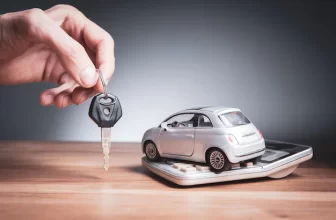
The COVID-19 pandemic hit everyone hard, from small business owners to physicians in once-thriving medical practices.
Now that world is starting to find its way back to “normal,” it’s time to take a hard look at your finances and redefine your budget. What has changed and is not going back to the way it was? What lessons have you had to learn that you can grow from?
You’re not alone in this revamp session. Millions of people found their bank accounts and credit scores went topsy-turvy over the past two years. What separates you from many of them is that you’re doing something to regain control.
Ready to put your budget back on track to meet your future goals? Follow these essential tips, and you’ll be successful.
1. Reconsider Your Old Budget
What was the budget you used pre-pandemic? How has it changed over the past two years while your income wasn’t as stable as it should have been?
Chances are, you’re dealing with a couple of new scenarios:
- Expenses that used to be important aren’t as vital, like entertaining clients and those middle-of-the-day coffee runs, and
- You’re facing the consequences of pushing back some of the non-essential expenses, such as credit cards.
Some realigning of your spending habits is in order. Take a look at your overhead and bills, no matter how much you dread the reality. You need a clear picture of where you are so you can build a plan to get where you want to go.
Use the 50/30/20 Plan
Until you’re back on track, it might be necessary to stick to a 50/30/20 budget. This plan allocates 50% of your income to needs, 30% to wants, and 20% to rebuilding or growing your savings and paying off debt.
The 50/30/20 plan works for personal and business budgets.
The 50/30/20 Plan in Action
As an example, consider a medical practice owner who felt the financial blow of the pandemic. They would start to reassess their finances now that things are a little more stable.
The common problem of employee turnover has calmed down. Patients are venturing back out for appointments, and insurance companies are paying claims on time again.
So, the owner could take their budget and projected future income and use the 50/30/20 plan to take control of their income. They’d allocate 50% to overhead and expenses and 30% to non-essential spending.
The remaining 20% would go to paying off debt and funding personal and employees’ savings.
Related Resource: What Does Refinancing Mean
2. Get Rid of High-Interest Debt
You might have some loans with not-so-great terms that you were planning to pay off before COVID hit. Or maybe you needed to use credit cards or a working capital loan to stay afloat for a little while.
Whatever kind of debt you have, if you’re paying interest on it, it has to go. Easier said than done, of course, but that’s what you’re doing right now: making a plan of action.
Start by listing all your expenses and how much you owe on them. Write the interest rate and the monthly payment amount next to those numbers.
Don’t worry about how much the total is right now. Focus on finding a strategy to knock it down quickly.
How to Knock Out Your Debt Fast
There are two common payoff strategies suggested by financial experts.
One is the high-interest strategy, where you focus any extra funds on the debt with the highest interest. Pay the minimum payment to the rest until that one is paid, and then repeat with the next highest debt.
The second one is similar to this, but it’s called the Debt Snowball. Pick the lowest debt you have, regardless of interest rate, and pay it off as soon as you can while making the bare minimum payments on the rest. Repeat until all debt is paid.
Both strategies will work, so choose whichever one you’re comfortable with and tackle that debt. Of course, if your debt is mounting, and you feel you cannot get it under control no matter what you try, it could be best to look for assistance from a professional like those at Stone Rose Law (Stoneroselaw.com). Experts like these will be able to find solutions to your problems and help you on the road to financial recovery.
3. Rebuild Your Savings
Finally, you can start rebuilding any savings that were depleted and working on your retirement portfolio.
It doesn’t matter if you start small while you’re regaining your financial footing as long as you’re moving forward.
A simple way to do this is by putting part of your paycheck into a retirement fund. A cash balance plan is an example. The fund helps you attract employees at the same time as netting you a solid return on your investment.
You can increase the percentage of your paycheck that goes into this fund as your budget gets in better shape.
Conclusion
When there’s a global shutdown of businesses, it’s going to have a ripple effect that is felt by everyone. Whether your budget needs to be fixed because of the pandemic or for another reason, these three tips will put you on the right financial track to success.
Read Also:








